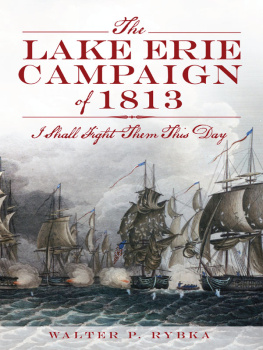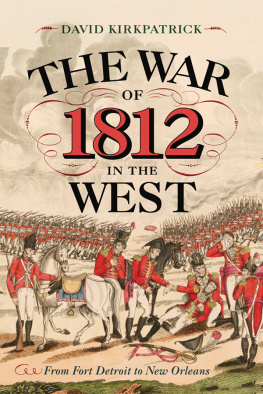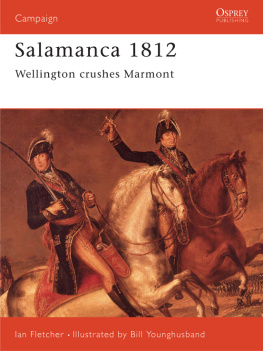Copyright
Copyright Richard Feltoe, 2014
All rights reserved. No part of this publication may be reproduced, stored in a retrieval system, or transmitted in any form or by any means, electronic, mechanical, photocopying, recording, or otherwise (except for brief passages for purposes of review) without the prior permission of Dundurn Press. Permission to photocopy should be requested from Access Copyright.
Editor: Allison Hirst
Design: Jennifer Scott
Epub Design: Carmen Giraudy
Library and Archives Canada Cataloguing in Publication
Feltoe, Richard, 1954-, author
A crucible of fire : the Battle of Lundys Lane, July 25, 1814 / Richard Feltoe.
(Upper Canada preserved War of 1812)
Includes bibliographical references and index.
Issued in print and electronic formats.
ISBN 978-1-4597-2212-5 (pbk.).--ISBN 978-1-4597-2213-2 (pdf).-- ISBN 978-1-4597-2214-9 (epub)
1. Lundys Lane, Battle of, Ont., 1814. 2. Lundys Lane, Battle of, Ont., 1814--Sources. I. Title. II. Series: Feltoe, Richard, 1954- . Upper Canada preserved War of 1812.
FC446.L8F44 2014 971.034 C2013-908372-3 C2013-908373-1
We acknowledge the support of the Canada Council for the Arts and the Ontario Arts Council for our publishing program. We also acknowledge the financial support of the Government of Canada through the Canada Book Fund and Livres Canada Books , and the Government of Ontario through the Ontario Book Publishing Tax Credit and the Ontario Media Development Corporation .
Care has been taken to trace the ownership of copyright material used in this book. The author and the publisher welcome any information enabling them to rectify any references or credits in subsequent editions.
J. Kirk Howard, President
Printed and bound in Canada.
Unless otherwise attributed, images and maps are the property and copyright of the author.
The publisher is not responsible for websites or their content unless they are owned by the publisher.
Visit us at
Dundurn.com | @dundurnpress | Facebook.com/dundurnpress | Pinterest.com/dundurnpress

Dedication
This book is offered:
First, as a salute to the memory of all those, on both sides of the lines, who served, sacrificed, and died as they loyally obeyed their countrys call-to-arms in the North American War of 18121815.
Second, as a mark of respect to the men and women of the military services of Canada,
Great Britain, and the United States, who today honourably continue that legacy of service and sacrifice
at home and across the globe.
Third, as a thank-you to my fellow Living History re-enactors, with and against whom Ive fought for so many years.
Finally, as a memory from Bamp to my grandsons, Anthony, Lawrence, and Daniel.
TABLE OF CONTENTS
ACKNOWLEDGEMENTS
T o completely misquote Prime Minister Winston Churchill, Never has so much been owed by one to so many. As such, as we move to book five of this series, the list of those deserving of thanks for their contributions and support grows ever longer. Unfortunately, there is never enough space within these published pages to adequately recognize each and every individual by name, and for this I wholeheartedly apologize. However, as in the past, certain people and organizations have made exceptional efforts on my behalf to support this project and it would be remiss of me not to at least recognize them.
First and foremost would be my wife, Diane, who is my front line in the management of all the business end of things, and who, by some gracious miracle, continues to tolerate and accept my ongoing absences and hermit-like seclusions when Im upstairs in the computer room, writing for hours on end.
Second, my grateful thanks go to my friend and fellow historian on the American side of the Niagara River, Pat Kavanagh, who freely and without hesitation gave me unrestricted access to his vast resource collection of American records, official documents, and personal letters on the war. Without his aid and resources, this work could definitely not have been created.
Next would be to credit the leadership and example provided by one of Canadas leading historians, Donald Graves, in showing me the value of dedicated scholarship and for producing quality published works about our nations heritage and history that I could refer to as a comparison and to cross-check the details and references that I have accumulated in my own research.
Beyond that come a host of dedicated staff members of the numerous museums, archives, and libraries that I visited to undertake the research for this work and who cheerfully assisted me in my searches to bring this work to fruition.
Nor can I fail to acknowledge the continued guidance and support provided by both my former editor, Cheryl Hawley, and my new guide to the mysteries (and frustrations) of editing, Allison Hirst, as well as my talented designer, Jennifer Scott, all backed by the extensive creative team at Dundurn in turning this idea into a reality.
Penultimately, I wish to thank Barry Penhale and Jane Gibson of Natural Heritage publications and my friend Karen who sadly passed away. These three collectively put my feet on the path that allowed me to become an author.
Finally, I want to go on record in expressing my deepest gratitude and thanks to all my readers, who have supported me by buying my books, overwhelmed me by their kind reviews and compliments on the series so far, and provided suggestions for ensuring the remaining parts maintain their deservedly high expectations.
PREFACE
Variations
I n writing a military history and using original quotes, every author on this subject has to deal with a certain set of problems in presenting their material. First, there is the fact that in the original documents one is dealing with historical personalities, each with varied levels of education and skills of writing and spelling, not all of which correspond to our own modern forms. Second, there are the inevitable references to official military formations, regimental affiliations, ranks and appointments, battlefield tactics and manoeuvres, et cetera that can sometimes appear alien to a modern reader not familiar with the subject. Third, there is the reality that place names have sometimes changed entirely or have gained different spellings over the years.
To address these points, this author has chosen to adopt the following position in the presentation of his accumulated materials.
On the matter of varied spellings in quotes, the material has been repeatedly checked to ensure its accuracy and is presented just as I found it in the original documents. I have therefore not included the highly distracting term sic after each variant word as it drives me to distraction when I see it used in other works and in my opinion effectively destroys the integrity and meaning of the quote to me as a reader. As I see it in reading works of this kind, either I trust that the author did his job properly and the quote is accurate, or I dont and I go and look it up for myself if Im so inclined.
On the second point, while generally recognized military terms are presented as is, some of the more archaic or jargon-type words are either followed by a modern equivalent. In a similar manner, maintaining the differential identification of military units from the two principal combatant nations (when both used a system of numbers to designate their regiments) has forced many modern writers to develop a system that will maintain a clear identity for their readers. I have adopted this convention and within this work British regimental numbers are shown as numerals (41st Regiment, 89th Regiment) and where required with their subsidiary titles (1st [Royal Scots] Regiment, 8th [Kings] Regiment), whilst the American regiments are expressed as words (First Regiment, Twenty-Fifth Regiment).







